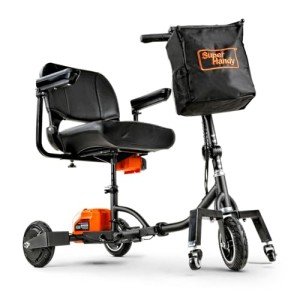Portable Mobility Scooters: Enhancing Freedom and Independence
As the world increasingly moves towards inclusivity and availability, portable mobility scooters have emerged as an innovative service for people with mobility challenges. These compact, easy-to-transport scooters are developed to empower users with the capability to browse their environments with self-confidence and ease. In this post, we will explore the characteristics, advantages, and factors to consider when going with a portable mobility scooter, supported by tables and FAQs to provide a comprehensive summary.
Comprehending Portable Mobility Scooters
Portable mobility scooters are lightweight, battery-operated cars that offer an alternative mode of transport for those with minimal mobility. Put together using durable materials, they are specifically engineered to be lightweight and compact to help with easy transport in vehicles or on public transport.
Key Features of Portable Mobility Scooters
| Function | Description |
|---|---|
| Weight Capacity | The majority of scooters can support users weighing in between 250 to 500 pounds |
| Battery Life | Common range of 10 to 30 miles per charge |
| Speed | Usually operates in between 4 to 8 miles per hour |
| Turning Radius | Differs from 32 to 60 inches, making them suitable for indoor use |
| Foldability | Lots of designs can be easily folded for transport |
| Wheels | Generally equipped with either strong or pneumatic tires |
Portable mobility scooters are perfect for both indoor and outside use, supplying stability and ease of movement.
Advantages of Portable Mobility Scooters
- Improved Freedom: Users can take part in activities that were formerly tough, such as shopping and interacting socially, thus enhancing overall lifestyle.
- Transportation Convenience: Many portable scooters can be easily taken apart or folded, enabling users to carry them in cars, vans, or public transport.
- Economical: Compared to powered wheelchairs, portable scooters are often cheaper, supplying a cost-effective solution.
- User-Friendly Design: Most designs feature intuitive controls, making them simple to operate for individuals of all ages.
- Range of Options: With many brands and models on the marketplace, possible users can select scooters that suit their specific requirements-- ranging from off-road usage to compact indoor options.
Crucial Considerations When Choosing a Portable Mobility Scooter
- Weight and Portability: Assess the weight of the scooter itself and its elements. Lighter models are generally easier to transport.
- Battery Life and Range: Consider how far you need to travel on a single charge. If you prepare for long journeys, a scooter with an extended battery life is critical.
- Size and Dimensions: Measure where you'll keep the scooter and guarantee it fits conveniently in your car or home.
- Convenience Features: Look for scooters with adjustable seats, armrests, and other ergonomic features for added convenience during use.
- Surface Compatibility: If you prepare to use the scooter outdoors, ensure it can handle various surfaces (e.g., gravel, grass) with ease.
| Factor to consider | Significance |
|---|---|
| Weight & & Portability | Affects ease of transport and storage. |
| Battery Life | Figures out range and liberty to explore. |
| Size | Essential for storage and maneuverability. |
| Convenience Features | Boosts the overall user experience. |
| Surface Compatibility | Ensures flexibility in outdoor conditions. |
Frequently Asked Questions (FAQs)
1. How fast can a portable mobility scooter go?
Many portable mobility scooters can reach speeds in between 4 to 8 miles per hour. Nevertheless, the speed might differ based upon the design and the weight of the user.
2. Do portable mobility scooters need a license or registration?
In many nations, portable mobility scooters do not need a driver's license or registration, however it's vital to examine local guidelines.
3. What is the typical rate variety of portable mobility scooters?
Rates generally vary from ₤ 600 to ₤ 3,000 or more, depending on features, brand, and specs.
4. Can portable mobility scooters be used on mass transit?
Yes, numerous public transportation systems accommodate portable mobility scooters, but it's recommended to sign in advance regarding policy information and area limitations.
5. What are the maintenance requirements?
Routine upkeep consists of battery checks, tire evaluations, and keeping the scooter clean. It's advised to seek advice from the user manual for particular upkeep standards for your design.
Portable mobility scooters have actually ended up being a lifeline for lots of people looking for self-reliance and mobility in their every day lives. Their convenience, ease of usage, and range of readily available designs allow users to choose the perfect scooter to fit their way of life.
For anyone considering purchasing a portable mobility scooter, it's important to examine individual needs thoroughly and explore various choices on the market. With lightweight folding electric scooters , these scooters can significantly improve mobility and assist in a more active way of life, eventually leading to enhanced health and health and wellbeing.
By comprehending the functions and elements included in choosing a portable mobility scooter, users can take the very first action towards declaring their liberty again. Whether for running errands, delighting in the outdoors, or simply moving the home, portable mobility scooters redefine what it implies to remain active and taken part in life.

